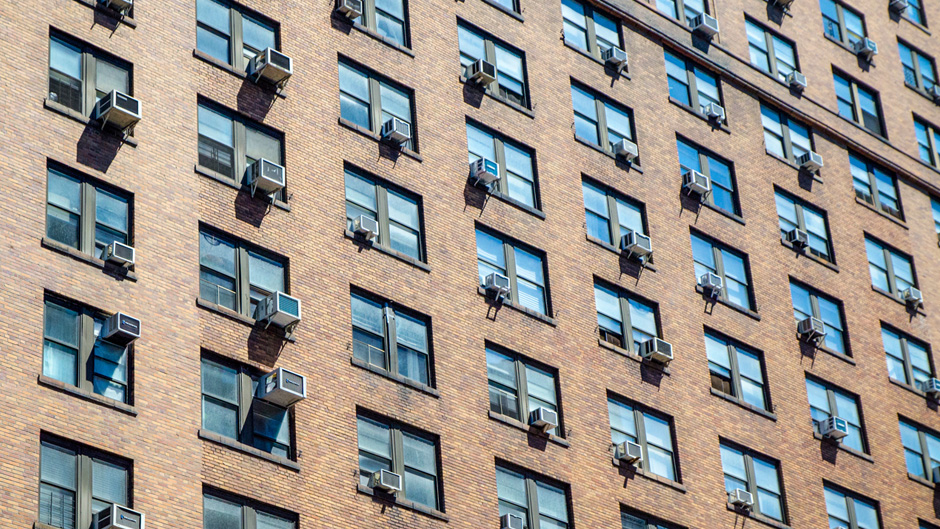
Super Heat Trio Explores Intense Indoor Heat Effects
The pain Benjamin Thomas suffers from a herniated disc is worse than it’s ever been. But despite the discomfort, he carries on with the task of mowing a residential lawn in Miami’s inner city, the first of four he hopes to cut on an unusually warm Saturday in early April.
“I need the money,” he shrugged. Money he intends to spend not for back surgery or on pain medications, but to pay a $200 past-due electric bill.
For the past year, Thomas and his wife have struggled to defray the cost of their energy needs, often foregoing necessities such as medicine, automobile repairs, and well-balanced meals to cool the inside of their home during what he likes to describe as the “dog days of summer.”
“July and August are the worst months,” he said, noting electric bills that can run as high as $300.
Thomas and his spouse are not alone. From Carol City to Florida City and from Hialeah to Homestead, many residents across Miami-Dade County live in homes that are too hot and struggle to pay electric bills that are too high, a new study by a team of University of Miami researchers and others has found.
“Researchers have long been aware that residential heat risks are very closely intertwined with the risks of unaffordable energy. Yet, they’ve examined the two in isolation. Our work is among the first to take an in-depth, simultaneous look at both problems,” said Lynée Turek-Hankins, the lead author of the study, who conducted the research during her Ph.D. studies at the University’s Rosenstiel School of Marine, Atmospheric, and Earth Science and the Abess Center for Ecosystem Science and Policy.
“We’ve shed new light on the complex interactions between heat and energy burdens,” she said. “And, probably most importantly, we’ve shown how they coincide to put households at risk.”
For the study, Turek-Hankins and her team placed sensors in 57 households across the county, recording temperature and humidity readings inside living quarters that included single-family homes, apartments, and condos. The team also analyzed surveys responses, reviewed energy bills, and interviewed residents, the majority of whom were Black or Hispanic, between the ages of 25 and 64, and had annual household incomes of less than $60,000.
“We expected low-income households would be impacted, but quantifying the risks underscores just how intense the burdens are,” said Turek-Hankins, who is now a postdoctoral fellow at Dartmouth College. “Some homes in the county are like greenhouses, hotter indoors than outdoors with average, in-home ‘feels like’ temperatures exceeding 100 degrees Fahrenheit for weeks on end.”
Among her team’s other findings:
Conducted in collaboration with Catalyst Miami, which seeks to identify and help solve issues that adversely affect low-income communities, and Miami-Dade County government officials, the study also revealed that heat and energy burdens intensify as outdoor temperatures rise.
“It’s hotter in Miami today than it was when I moved here 40 years ago, and the demands to cool our house have grown with our other needs,” said Thomas, who was not part of the study, which is published in the journal One Earth.
“Miami’s not like other cities with temperate climates. So, our study is distinct in that we look at the impact on households in a municipality that experiences many months of hot and humid weather,” said Mayra Cruz, a Ph.D. student at the Rosenstiel School and Abess Center and one of the study’s co-investigators.
Cruz recalled interviewing residents who lived in homes with broken air-conditioning units. “The residents were already faced with paying staggering expenses for other needs and just couldn’t afford to repair the AC or buy a new one,” she said.
“We walked into some homes to interview residents, and it was so hot inside that we decided to speak with them outdoors,” recalled Nkosi Muse, who graduates with a Ph.D. in environmental science and policy this semester and accompanied Turek-Hankins and Cruz on many of those in-home interviews.
With a background in meteorology, Muse has conducted extensive research on climate, using satellite telemetry to analyze land surface temperature patterns in different Miami neighborhoods and determine how those patterns affect surface air temperatures. Some of the data he collected as part of his own research was used in the study lead by Turek-Hankins
Collectively, the three are known as “the Super Heat Trio.”
“These three scholars bring very different disciplinary backgrounds spanning meteorology, health sciences, and engineering. It’s a powerful combination—and necessary for cracking open understanding of complex risks,” said Katharine J. Mach, professor and chair of the Department of Environmental Science and Policy at the Rosenstiel School, who has mentored the three during their academic careers at the University.
“While we knew we all had different backgrounds, we realized we shared a common interest: studying the hazards of heat. It’s been a natural fit of us to collaborate and lean on each other’s diverse expertise,” said Cruz, whose background is in public health sciences. Future research, she added, will focus on the health impacts of living in a dangerously hot indoor environment.
The study, explained Turek-Hankins, could serve as a springboard to new policies designed to help residents pay for the costs of cooling their homes. “We know how to design good houses, and we know how to spec HVAC systems for those homes,” she said. “We’re creating better and more efficient technology. So, it’s more of a question of how do we improve access to affordable cooling options? How do we make sure that people can afford to run those systems when they have them?”
https://news.miami.edu/stories/2025/04/super-heat-trio-examines-the-impacts-of-intense-indoor-heat.html


